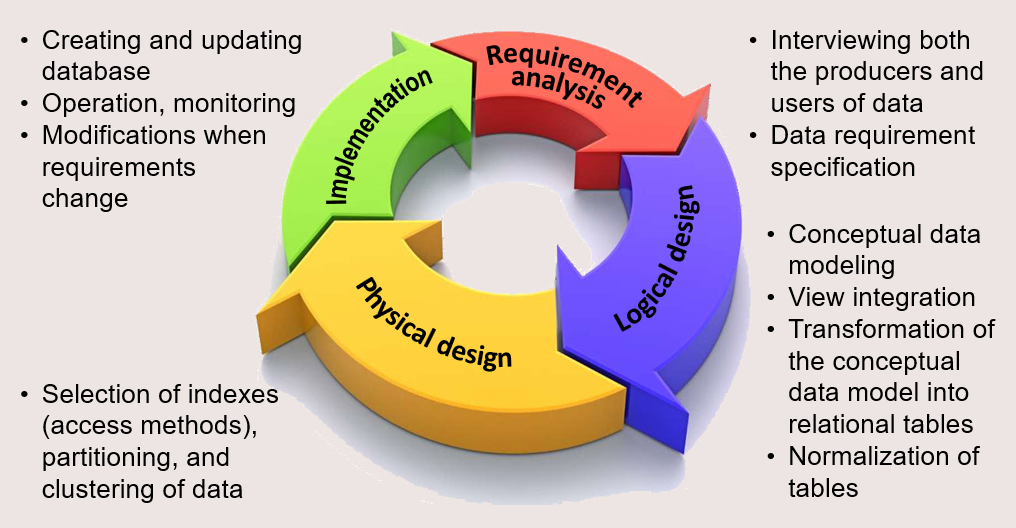
Database development involves
designing, creating, and managing databases to efficiently and securely store,
organize, and retrieve data. Databases are essential components of most
software applications, from simple web apps to complex enterprise systems. Here
are the key aspects and considerations in database development:
1. **Requirements Analysis**:
- Identify the data needs of the
application, including the types of data to be stored, the expected data
volume, and the relationships between different data entities.
2. **Database Design**:
- Choose an appropriate database management
system (DBMS) such as MySQL, PostgreSQL, Microsoft SQL Server, Oracle, or NoSQL
databases like MongoDB or Cassandra.
- Design the database schema, including
tables, fields, and relationships, based on the data requirements.
- Consider normalization to reduce data
redundancy and improve data integrity.
3. **Data Modeling**:
- Create entity-relationship diagrams (ERDs)
to visualize the structure and relationships of the data.
- Choose the appropriate data modeling
technique, whether it's relational, document-based, graph, or other data
models.
4. **Database Implementation**:
- Write SQL scripts or use database
management tools to create the database schema.
- Define data constraints, such as primary
keys, foreign keys, unique constraints, and check constraints.
5. **Data Migration**:
- If migrating from an existing database or
data source, plan and execute data migration to the new database.
- Ensure data integrity during the migration
process.
6. **Indexing and Query
Optimization**:
- Create appropriate indexes on tables to
speed up data retrieval and query performance.
- Write efficient database queries and
optimize them to reduce response times.
7. **Stored Procedures and
Functions**:
- Implement stored procedures and functions
to encapsulate and execute complex database operations.
- Stored procedures can enhance security and
improve performance.
8. **Triggers**:
- Create database triggers to automatically
execute actions (e.g., updating data) in response to specific database events
(e.g., data changes).
9. **Security and Access
Control**:
- Implement database security measures,
including authentication and authorization.
- Restrict access to sensitive data by
defining roles and permissions for users and applications.
10. **Backup and Recovery**:
- Establish regular database backup and
recovery procedures to prevent data loss in case of system failures or errors.
11. **Data Validation and
Sanitization**:
- Apply data validation rules to ensure the
integrity of data being inserted or updated.
- Sanitize user inputs to prevent SQL
injection and other security vulnerabilities.
12. **Scalability**:
- Plan for database scalability by
considering future data growth and performance requirements.
- Options include sharding, replication,
and scaling horizontally by adding more database servers.
13. **Monitoring and
Performance Tuning**:
- Set up database monitoring tools to track
system performance, identify bottlenecks, and troubleshoot issues.
- Continuously fine-tune the database
configuration for optimal performance.
14. **Data Archiving and
Purging**:
- Implement data archiving and purging
strategies to manage historical or obsolete data and maintain database
efficiency.
15. **Documentation**:
- Maintain thorough documentation,
including database schemas, data dictionaries, and SQL scripts for data
manipulation and maintenance.
16. **Compliance and
Regulations**:
- Ensure compliance with relevant data
protection regulations, such as GDPR, HIPAA, or industry-specific standards.
- Implement auditing and security measures
to protect sensitive data.
17. **Database Maintenance and
Updates**:
- Regularly apply software updates,
patches, and security fixes for the DBMS.
- Test new versions of the DBMS and plan
upgrades as needed.
18. **User Training**:
- Provide training to database
administrators, developers, and users on best practices, query optimization,
and security measures.
Database development is an
ongoing process, and databases require continuous maintenance and optimization
to meet the evolving needs of applications and organizations. Well-designed and
well-maintained databases are crucial for data-driven applications and
decision-making processes.
Proffesional
- Unlimited Pages
- All Team Members
- Unlimited Leads
- Unlimited Page Views
- Export in HTML/CSS